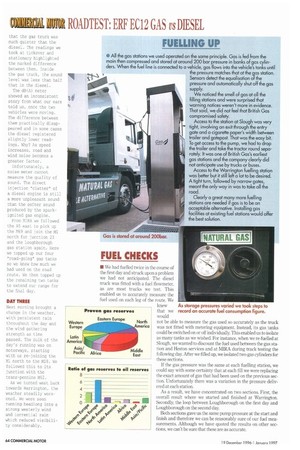FUELLING UP
Page 66

If you've noticed an error in this article please click here to report it so we can fix it.
All the gas stations we used operated on the same principle. Gas is fed from the main then compressed and stored at around 200 bar pressure in banks of gas cylinders. When the fuel line is connected to a vehicle, gas flows into the vehicle's tanks until the pressure matches that at the gas station. Sensors detect the equalisation of the pressure and automatically shut off the gas supply. We noticed the smell of gas at all the filling stations and were surprised that warning notices weren't more in evidence. That said, we did not feel that British Gas compromised safety. Access to the station at Slough was very tight, involving an exit through the entry gate and a cigarette paper's width between trailer and gatepost. That was the easy bit. To get access to the pump, we had to drop the trailer and take the tractor round separately. It was one of British Gas's earliest gas stations and the company clearly did not anticipate use by trucks or buses. Access to the Warrington fuelling station was better but it still left a lot to be desired. A tight turn, followed by narrow gates, meant the only way in was to take all the
rOCKI.
Clearly a great many more fuelling stations are needed if gas is to be an acceptable alternative. Installing gas facilities at existing fuel stations would offer the best solution.








































































































































